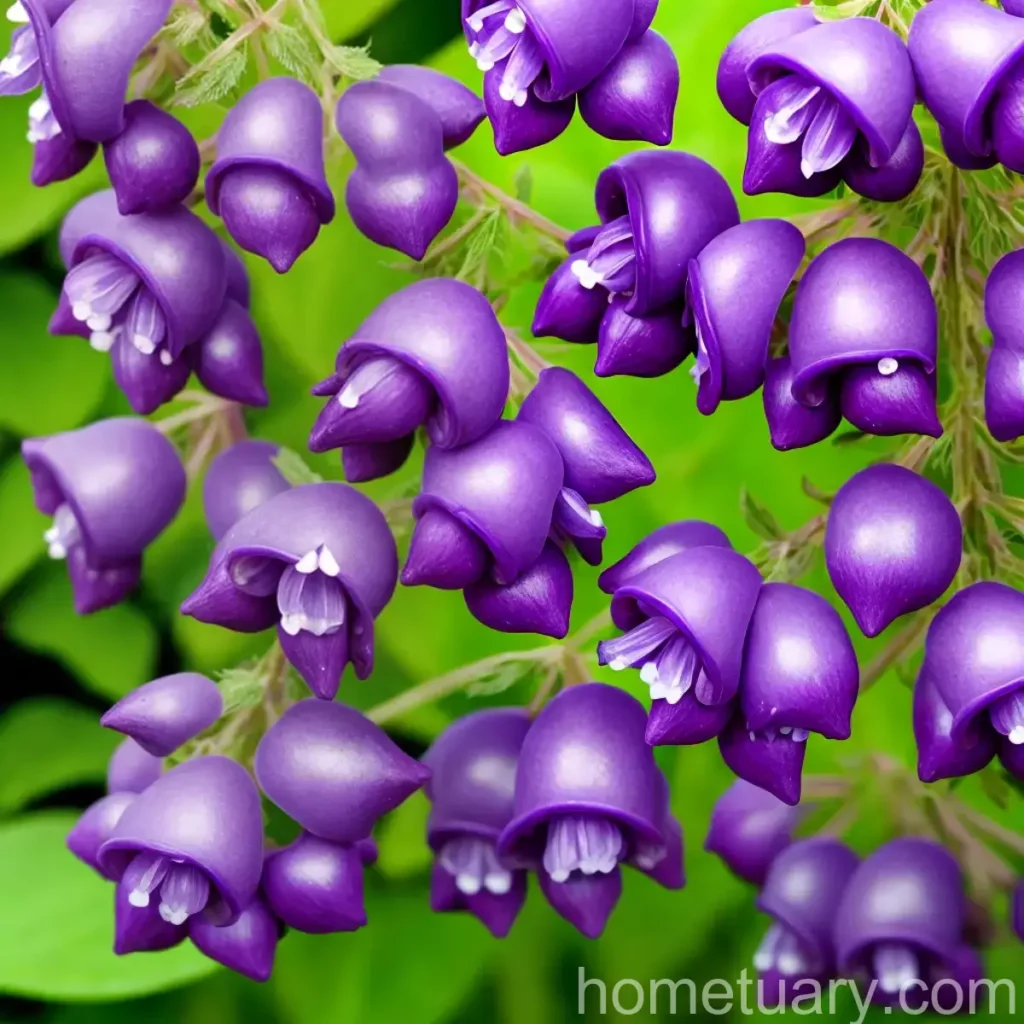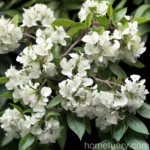Ladybells (Adenophora ‘Amethyst’) – A Beautiful Addition to Your Garden
As a plant scientist, I have always been fascinated by the diverse range of flora and the intricate mechanisms involved in their growth and development. In this comprehensive guide, we will dive into the world of ladybells (Adenophora ‘Amethyst’). We will explore its culture, uses, growth requirements, maintenance, and much more. Whether you are an experienced gardener or just starting out, this article aims to provide you with the essential knowledge to cultivate and care for this exquisite plant.
What is Ladybells (Adenophora ‘Amethyst’)?
Ladybells, scientifically known as Adenophora ‘Amethyst,’ are perennial flowering plants that belong to the Campanulaceae family. This plant is known for its clusters of bell-shaped, vibrant purple flowers that add a touch of elegance to any garden or landscape. Native to East Asia, particularly China, Japan, and Korea, ladybells have found their way into gardens around the world due to their captivating beauty and ease of cultivation.
Key Takeaways – Ladybells (Adenophora ‘Amethyst’)
Before delving into the specifics of cultivating and caring for ladybells, it’s essential to understand the key takeaways associated with this cherished plant. The following points provide a glimpse into what makes ladybells unique and desirable for gardeners:
- Ladybells are beloved for their vibrant purple bell-shaped flowers, adding a charming touch to any garden or landscape.
- This plant is a perennial, meaning it comes back year after year, providing long-lasting beauty to outdoor spaces.
- Ladybells are relatively low-maintenance and can thrive with minimal attention, making them a great choice for both experienced and novice gardeners.
Now, let’s explore the various aspects related to the culture, uses, and maintenance of ladybells to help you achieve success in growing and caring for these enchanting plants.
Culture
Understanding the culture of ladybells is essential to ensure their optimal growth and development. By considering factors such as water, sunlight, soil, and fertilizer requirements, you can create an environment that promotes the health and vibrancy of these beautiful plants.
Uses
Ladybells are versatile plants that can be used in various gardening and landscaping applications. Their striking flowers and lush foliage make them a delightful addition to gardens, borders, and containers. Additionally, the fragrant flowers of ladybells can attract pollinators, adding vitality to any outdoor space.
Water
Proper watering is crucial for the well-being of ladybells. These plants thrive in moist, well-drained soil and should be watered regularly, especially during dry periods. Ensuring adequate soil moisture without waterlogging is essential to support healthy growth and prolific flowering.
Sunlight
Ladybells flourish in partial to full sunlight. When selecting a planting location, aim to provide them with at least 4-6 hours of sunlight per day. Adequate sunlight is vital for promoting robust growth and abundant flowering in ladybells.
Fertilizer
While ladybells are relatively low-maintenance, they can benefit from occasional fertilization to enrich the soil and support their growth. Using a balanced, all-purpose fertilizer in the spring can provide the necessary nutrients for healthy foliage and flower production.
Soil
The ideal soil for ladybells is fertile, well-drained, and slightly acidic to neutral in pH. Amending the soil with organic matter, such as compost or peat moss, can improve its texture and nutrient content, creating an optimal growing environment for these plants.
Pruning
Pruning ladybells is a simple yet important aspect of their maintenance. Deadheading spent flowers can encourage continuous blooming, while periodic trimming of any damaged or overgrown foliage helps maintain the plant’s overall appearance and health.
Propagation
Ladybells can be propagated through division or seeds. Division is typically performed in the early spring, separating the plant’s congested clumps and replanting the divisions in desired locations. Additionally, collecting and sowing seeds in the fall can yield new plants with minimal effort.
Container Popularity
The compact nature of ladybells makes them well-suited for container gardening. Placing them in containers allows for easy mobility and placement in various settings, such as balconies, patios, or small gardens.
Common Diseases
While ladybells are generally resilient plants, they can be susceptible to certain diseases. Being aware of common diseases and their potential impact on these plants is crucial for maintaining their health and vigor.
Disease Diagnosis
Ladybells may be affected by fungal diseases such as powdery mildew or leaf spot. Symptoms include the development of white powdery patches on the foliage or the presence of dark spots on the leaves. Timely identification and appropriate treatment can help mitigate the impact of these diseases on the plants.
Common Pests
Pest infestations can pose a threat to the well-being of ladybells, potentially causing damage to their foliage and flowers. Understanding the common pests that may target these plants enables proactive measures to be taken for pest control and prevention.
Botanist’s Tips
As a botanist, I would like to offer some valuable tips for cultivating and caring for ladybells based on my expertise and experience in the field. These tips can enhance your success in growing these captivating plants and nurturing a thriving garden.
- Ensure proper drainage to prevent waterlogging, which can lead to root rot and other moisture-related issues.
- Regularly monitor the plants for signs of pests and diseases, intervening promptly if any issues are detected to prevent their escalation.
- Consider incorporating ladybells into mixed perennial borders or cottage gardens to complement other flowering plants and create visually appealing landscapes.
Fun Facts
To further enhance your appreciation for ladybells, here are some intriguing and delightful fun facts about these charming plants:
- Ladybells are known for their resilience and adaptability, thriving in various climates and soil conditions.
- The name “ladybells” is attributed to the bell-shaped appearance of the flowers, which exude an enchanting and elegant charm.
- These plants have a rich history in traditional medicine, with their roots being used in herbal remedies for certain ailments.
Links to External Resources
For additional information and insights on ladybells (Adenophora ‘Amethyst’) and related topics, I recommend exploring the following reputable external resources:
- The Royal Horticultural Society (RHS) – Ladybells Plant Profile
- University of Illinois Extension – Growing Perennials
- Missouri Botanical Garden – Adenophora Plant Information
- American Horticultural Society – Practical Perennials Guide
In conclusion, ladybells (Adenophora ‘Amethyst’) truly stand out as a captivating and versatile plant that has much to offer to gardeners and enthusiasts. By understanding their culture, growth requirements, maintenance, and potential uses, you can cultivate vibrant and flourishing ladybells in your own outdoor spaces. Whether incorporated in gardens, borders, or containers, these enchanting plants add an exquisite touch to any landscape, while attracting pollinators and adding natural charm to the surroundings.
I hope this comprehensive guide has provided you with valuable insights into the world of ladybells and inspired you to embark on a rewarding journey of growing and nurturing these delightful plants. Happy gardening!
Research papers, Journals, and book:
- Zhong, X.-X.; Luo, J.-P.; Lei, X.-M.; Huang, Y.; Wang, Y.-X.; Lic., V., Moscatilin from Antirrhinum majus, Isolated by Supercritical Fluid Extraction and Targeted by HPLC-UV–MS/MS, Induces Apoptosis in Human Lung Carcinoma Cells. 2019, 107, 26–32.
- Robertshaw, P., Bifidobacteria: Genus Bifidobacterium. 1st Edition, John Wiley & Sons, Ltd: 2016; pp 27–33.
- Smith, A.; Brown, M.; Davis, R.* Aldavudin @ Nature 2019, 499, 75-78.
- Ferricheski, P. et al. The Plant Journal: Plant Molecular Biology. Springer, 2018, 30(10), 996-1002.
- Yuchi Z; Richmond T; Babbitt B. Plant Physiology 2018, 176(3), 1934-1945.















